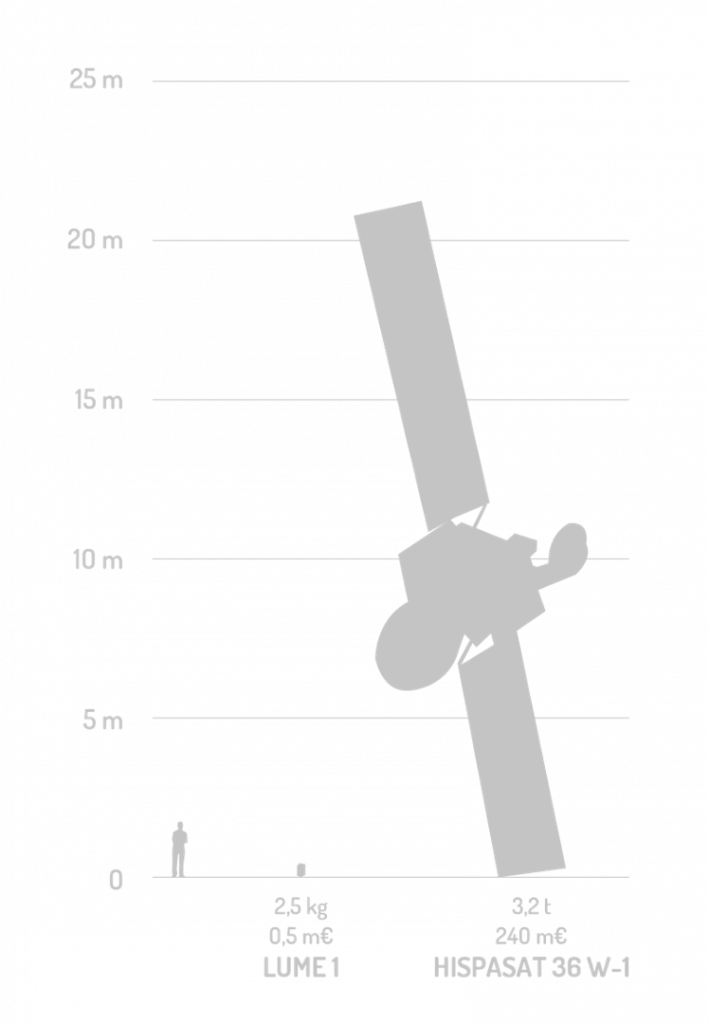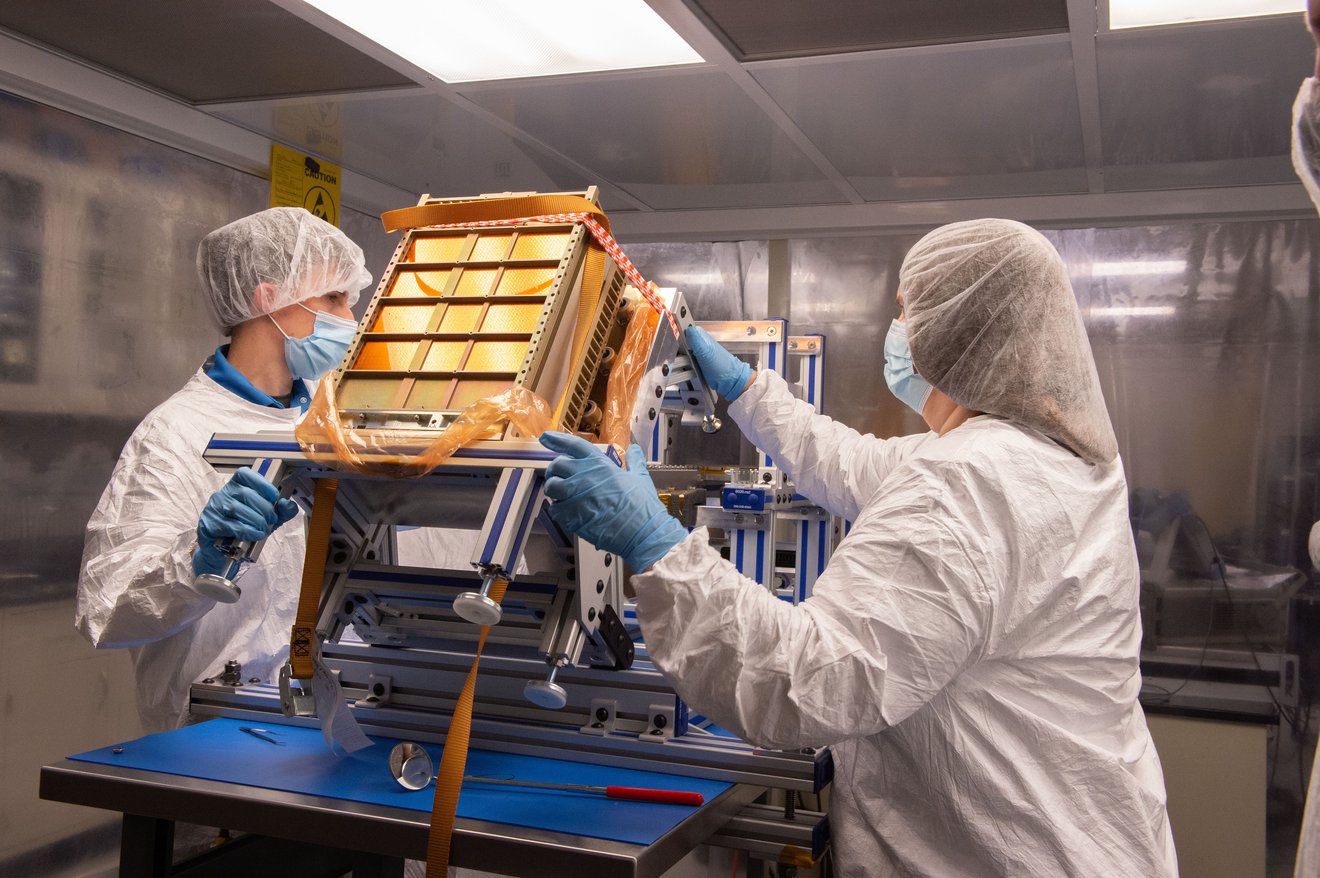Apart from their size and cost, the biggest advantage of a small-satellite is the short time period required to develop each model. An average-sized or large satellite requires between 5 and 15 years to identify the need and place it in the right orbit under normal parameters. So what are the implications of this? Well, between the start and end of operations, needs may well have changed, which means that the initially planned uses are no longer market-appropriate. What’s more, telecommunications technologies are constantly changing and being updated, which means that conventional satellites eventually end up operating with 15-year-old technologies. It is impossible to constantly update large satellites, which means that they cannot be modified even when a market or technology opportunity arises.
However, this is not the case of small-satellites: it can take less than 8 months to detect a need and place them in orbit. In addition to guarantees of redundancy and robustness, nano-satellite constellations provide a system in which the concepts of obsolescence or useful life are no longer an issue. The very nature of nano-satellites means that constellations are regularly renewed, ensuring a consistent state-of-the-art system, the result of ongoing technological upgrades. This constant renewal ensures that the constellation owner can provide an optimum technological service at all times.
Developing small satellites in accordance with CubeSat standards contributes to cutting the costs of research and technical phases. This contributes significantly to overcoming the entry barrier to space, which has led to a sharp hike in CubeSats’ popularity since its introduction. Depending on the specifications, for a small-satellite the cost factor in relation with a conventional satellite can be as high as 1000.
Particularly worthy of mention is the emergence of micro-launchers around the world; dedicated exclusively to placing small satellites in orbit, they have lowered launch costs. In addition to the actual development of each satellite, launching a small-satellite as part of a constellation allows for the risk involved in any space mission to be divided up amongst smaller segments.
As a result, if a small-satellite is lost or one of the units fails, it can be rapidly replaced within feasible time periods and at a reasonable cost. In contrast, the failure of a large-scale satellite may well jeopardise the entire mission.
The reduced cost of small-satellites does not mean that they are less reliable. With the right methodologies during both the satellite design and testing phases, the success of a mission can be guaranteed, leaving only those factors that cannot be controlled to chance: incidents such as launch failures, solar storms or the impact of a meteorite or piece of space junk.
Once the small-satellite has been developed, tested and is ready for operations, it must be placed in orbit. There are currently multiple launch options for nano-satellites, including the shared use of government agency rockets, private company launchers or logistic links with the International Space Station (ISS). CubeSats take up reduced amounts of volume and mass, making them easy to load onto spacecraft as well as a low cost solution.
Furthermore, the emergence of micro-launchers around the world, dedicated exclusively to placing small satellites in orbit, has forced the market to lower launch prices.
- Satellites travel around the Earth in circular or elliptical orbits thanks to the balance between the gravitational and escape pull during launch. The absence of air means that there is no friction to alter the equation and they can remain in orbit practically indefinitely. When a small-satellite comes to the end of its operational life, a re-enter procedure can be applied to manage the entrance in the atmosphere., also an important feature for the life cycle management of new satelites.
- As a general rule, nanosatellites are launched in low circular or elliptical orbits (altitudes of between 400 and 650 km) and travel at around 8 km per second. At this altitude and height, it takes them around 90 minutes to orbit the Earth, completing between 14 and 16 orbits a day. These conditions are ideal for small-satellites. By orbiting closer to the Earth, they not only guarantee optimum conditions for land observation or communications, but are also better protected from solar and cosmic radiation.
- Small-satellites are groups of constellations that provide backing, redundancy and granularity for the services they provide. Each satellite within a constellation is renewed every 2-4 years, thereby guaranteeing that the operator will always have an optimised low risk service that receives ongoing technological upgrades. Small-satellite constellations are therefore systems in which the concepts of obsolescence or useful life are no longer an issue.
- CubeSats have appeared in the last 15 years and represent a new paradigm in the satellite industry. They are radically smaller than conventional satellites, resulting in lower costs, which offsets the reduced risk of failure and shorter useful life, which is nevertheless acceptable for numerous applications. The special nature of nanosatellites does not prevent them from carrying out the same tasks as larger devices. The features naturally differ, but are sufficient for multiple industrial applications.
The main applications of small-satellites are focused on:
- Earth Observation – Collecting and interpreting data is essential for the correct management of natural resources and developing sustainable economies. Analysing human impact on agriculture, forest, geology and the environment is crucial in order to improve the population’s living conditions.
- Communication and IoT – Small-satellites have laid the foundations for developing the Internet of Things (IoT) on a global scale, connecting areas of the world without land communication cover via infrastructures in space. There is a growing number of sensorised objects and networks requiring global connections and communications.
- Geolocation and Logistics – Locating and handling assets (aircraft, ships, vehicles, etc.) can prove impossible or at best extremely costly in areas where there is no land cover. Located in space and offering a global vision, nanosatellite constellations can provide immediate monitoring of various asset groups anywhere on the planet. Nanosatellites can complement current networks by providing complex logistic management solutions.
- Geolocation and Logistics – Locating and handling assets (aircraft, ships, vehicles, etc.) can prove impossible or at best extremely costly in areas where there is no land cover. Located in space and offering a global vision, small-satellite constellations can provide immediate monitoring of various asset groups anywhere on the planet. Small-satellites can complement current networks by providing complex logistic management solutions.
- Scientific Applications – In addition to commercial solutions, CubeSats can also be used for space observation programmes, interplanetary missions, systems testing in orbit or biomedical research. They also represent a gateway for the development of space programmes in those countries that have not yet joined the space race.
Since the first artificial object was placed in orbit around the Earth, back in 1957, humankind has launched thousands of satellites, although there are no reliable or complete records. According to the United Nations Office for Outer Space Affairs (UNOOSA), more than 11,000 objects have been launched into outer space. However, this number does not only include satellites, but also probes, rockets and other devices. Due to the nanosatellite revolution, the number of objects will rise sharply over the coming years as the vast potential of Space Business unfolds.
Nano-satellites are loosely defined as any satellite weighing less than 10 kilograms. CubeSats must also comply with a series of specific criteria that control factors such as their shape, size and weight. CubeSats can come in various sizes, but they are all based on the standard CubeSat unit, namely a cube-shaped structure measuring 10x10x10 centimetres with a mass of somewhere between 1 and 1.33 kg. This unit is known as 1U. After the first few years, this modular unit was multiplied and larger nano-satellites are now common (1.5U, 2U, 3U or 6U). Today, new configurations are under development. Nano-satellite development based on CubeSat standards guarantees ongoing and relatively inexpensive access to space, as well as a wide range of launch and space rocket options. CubeSat standardisation opens up the possibility of using commercial electronic parts and the choice of numerous technology suppliers, thereby considerably cutting the costs of CubeSat engineering and development projects in comparison with other types of satellites.

Stratosphere S.A. Has a beyond state technology fully aligned with the major tech trends. The company developed over the last 10 years technology for SHM, WHM and IVHM, AFS and Small Satellites. Our technology is one of the most advanced frameworks in the Industry.
Stratosphere S.A. is a global provider of integrated health management solutions. The robustness and integration of its solutions are the pinnacle of SHM systems.
bizdev@stratosphere-tech.com

